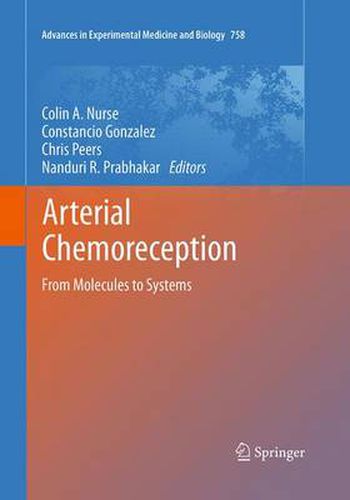Readings Newsletter
Become a Readings Member to make your shopping experience even easier.
Sign in or sign up for free!
You’re not far away from qualifying for FREE standard shipping within Australia
You’ve qualified for FREE standard shipping within Australia
The cart is loading…






Arterial chemoreceptors are unique structures which continuously monitor changes in arterial blood oxygen, carbon dioxide, glucose, and acid. Alterations in these gases are almost instantaneously sensed by arterial chemoreceptors and relayed into a physiological response which restores blood homeostasis.
Arterial Chemoreception contains updated material regarding the physiology of the primary arterial chemoreceptor; the carotid body. Moreover, this book also explores tantalizing evidence regarding the contribution of the aortic bodies, chromaffin cells, lung neuroepithelial bodies, and brainstem areas involved in monitoring changes in blood gases. Furthermore this collection includes data showing the critical importance of these chemoreceptors in the pathophysiology of human disease and possible therapeutic treatments. This book is a required text for any researcher in the field of arterial chemoreception for years to come. It is also a critical text for physicians searching for bench-to-bedside treatments for heart failure, sleep apnea, and pulmonary hypertension.
$9.00 standard shipping within Australia
FREE standard shipping within Australia for orders over $100.00
Express & International shipping calculated at checkout
Arterial chemoreceptors are unique structures which continuously monitor changes in arterial blood oxygen, carbon dioxide, glucose, and acid. Alterations in these gases are almost instantaneously sensed by arterial chemoreceptors and relayed into a physiological response which restores blood homeostasis.
Arterial Chemoreception contains updated material regarding the physiology of the primary arterial chemoreceptor; the carotid body. Moreover, this book also explores tantalizing evidence regarding the contribution of the aortic bodies, chromaffin cells, lung neuroepithelial bodies, and brainstem areas involved in monitoring changes in blood gases. Furthermore this collection includes data showing the critical importance of these chemoreceptors in the pathophysiology of human disease and possible therapeutic treatments. This book is a required text for any researcher in the field of arterial chemoreception for years to come. It is also a critical text for physicians searching for bench-to-bedside treatments for heart failure, sleep apnea, and pulmonary hypertension.